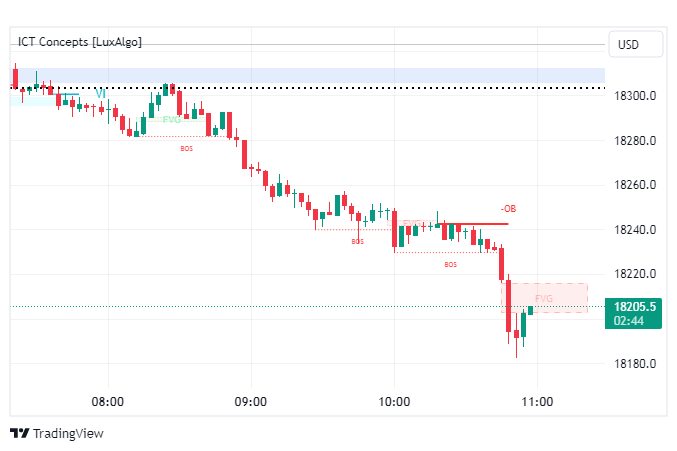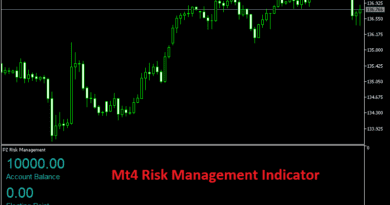How to use ICT Trading concepts in Forex
You might have come across the term “ICT Trading concepts” buzzing around forex trading platforms, blogs, and online communities. While it’s been part of the industry lingo for quite some time, it’s really surged in popularity over the past few years. ICT stands for Inner Circle Trading, a methodology spearheaded by the seasoned trader Michael Huddleston, boasting over two decades of market experience.
In this article, we’ll dive into the origins of ICT, explore how you can apply this trading approach, and cover everything you need to get started. So, let’s jump right in!
ICT Trading concept in Forex
The ICT trading ideas and strategies stand out as pioneers in the world of online retail trading. In the past, traders use normal concepts categories like technical price action, fundamental analysis, or supply and demand concept.
However, what sets ICT apart is its ability to use these diverse elements into a simple approach. At its base, these concepts revolve around identifying optimal prices and leveraging institutional footprints within the markets to track the movements of major players. Timing is crucial, with specific windows during trading sessions, known as the “killzone,” favored by ICT traders for executing trades when trading volume is ample enough to drive swift price action.
What is truly is amazing about ICT concept is its intelligent utilization of supply and demand dynamics within the markets, surpassing traditional retail trading practices. While claims of reading institutional order flow have often been made in the trading world, ICT concepts traders emerges as the first group of traders capable of substantiating these assertions.
Though the strategies remain subjective, offering both promise and challenge, there exists a framework of rules and concepts that enables traders to construct robust, rule-based systems within this trading style. It’s an intriguing blend of theory and practice, offering ample room for exploration and potential profitability for those willing to pracrice and master it.
Key elements of ICT Trading concepts
ICT trading concepts and techniques are in general six concepts: Liquidity, Displacement, Market Structure, Inducement, Fair Value Gap, Optimal Trade Entry, and Balanced Price Range.
Let’s briefly outline each one:
Liquidity:
This refers to the degree to which an asset or security can be quickly bought or sold in the market without affecting its price. In ICT trading, understanding liquidity levels is crucial for executing trades effectively and minimizing slippage.
Displacement:
Displacement involves recognizing when the market has been moved away from its “natural” position due to factors such as news events, market sentiment, or institutional activity. Traders utilizing displacement analysis aim to identify these shifts and capitalize on potential price reversals or continuations.
Market Structure:
Market structure analysis involves studying the organization and behavior of market participants, including institutional players, retail traders, and algorithms. By understanding market structure, traders can identify key levels of support and resistance, as well as potential areas of accumulation or distribution.
Inducement:
Inducement refers to the deliberate manipulation of market prices by large institutional players or market makers to induce retail traders into taking certain positions. Recognizing inducement patterns allows traders to avoid falling into traps and instead capitalize on genuine market movements.
Fair Value Gap:
The fair value gap concept involves identifying discrepancies between the perceived value of an asset and its current market price. Traders using this technique look for opportunities to enter trades when the market price deviates significantly from its fair value, anticipating a correction or reversion to the mean.
Optimal Trade Entry and Balanced Price Range:
Optimal trade entry focuses on identifying high-probability entry points based on a combination of technical and fundamental factors. Balanced price range analysis involves identifying areas where buying and selling pressure are in equilibrium, often leading to significant price movements once this balance is disrupted.
These concepts and techniques form the foundation of the ICT trading approach, providing traders with a comprehensive framework for analyzing markets and making informed trading decisions. By mastering these principles, traders can gain a deeper understanding of market dynamics and improve their overall trading performance.
The best ICT Trading concepts indicators in tradingview

While there may not be specific indicators on TradingView labeled as “ICT trading concepts, i did my search i found that the best ICT Trading concepts indicators in tradingview in an indicator called :ICT Concepts [LuxAlgo].
the ICT Concepts [LuxAlgo] indicator regroups core concepts highlighted by trader and educator “The Inner Circle Trader” (ICT) into an all-in-one toolkit. Features include Market Structure (MSS & BOS), Order Blocks, Imbalances, Buyside/Sellside Liquidity, Displacements, ICT Killzones, and New Week/Day Opening Gaps.
you can find ICT Trading concepts indicators in tradingview in this link.
Sources to learn ICT Trading concepts
Learning ICT (Inner Circle Trader) trading concepts can be a valuable endeavor for traders seeking to develop a deeper understanding of market dynamics and improve their trading skills. While ICT’s teachings were primarily disseminated through his Inner Circle Trader website, which included paid content and mentoring programs, there are still several ways to learn about ICT trading concepts:
Inner Circle Trader Website (ICT’s Original Content): ICT’s website, if still available, may contain a wealth of information, including articles, videos, and webinars covering various trading concepts. Note that access to some content may require a subscription or purchase.
YouTube Channels and Videos: Many traders and enthusiasts have created YouTube channels dedicated to explaining ICT trading concepts. These channels often offer tutorials, analysis, and insights into ICT methodologies. Search for channels that focus on ICT trading or specific concepts like order blocks, market structure, and Fibonacci analysis.
Forums and Online Communities: Participating in trading forums and online communities can provide valuable insights and discussions on ICT trading concepts. Look for forums where traders discuss ICT methodologies, share insights, and ask questions. Be cautious of misinformation and verify information with credible sources.
Books and Educational Resources: While there may not be specific books solely dedicated to ICT trading concepts, general trading books covering technical analysis, market psychology, and risk management can complement your understanding of ICT methodologies. Look for books recommended by ICT or those that align with his teachings.
Conclusion
In conclusion, ICT (Inner Circle Trader) trading concepts offer traders a comprehensive framework for analyzing and navigating financial markets. While these concepts come with inherent risks and complexities, they also present opportunities for profitability when applied effectively. Traders who diligently study and practice ICT methodologies can benefit from:
- A holistic approach to market analysis, encompassing elements such as market structure, order flow, and sentiment.
- Identification of high-probability trading setups based on confluence of factors.
- Emphasis on risk management and capital preservation, essential for long-term success.
- Adaptability to different trading styles and timeframes, allowing traders to tailor their strategies to their preferences.
- Support and resources from the ICT community, facilitating knowledge sharing and idea generation.
However, traders should be aware of the risks associated with ICT concepts, including complexity, subjectivity, and the potential for false signals. It’s crucial to approach ICT trading with a critical mindset, continuously refine one’s skills, and adapt to changing market conditions.
Ultimately, success in ICT trading requires a combination of education, experience, discipline, and risk management. By diligently applying ICT concepts and continuously learning and evolving as traders, individuals can strive towards achieving their trading goals and objectives.








